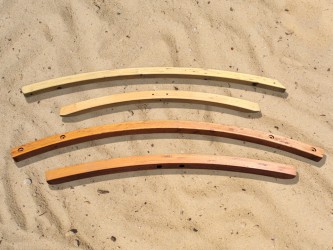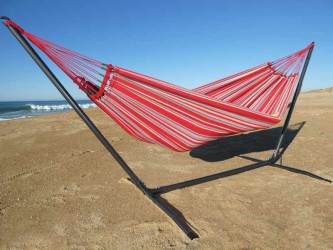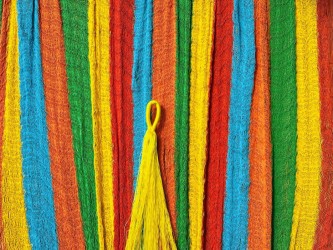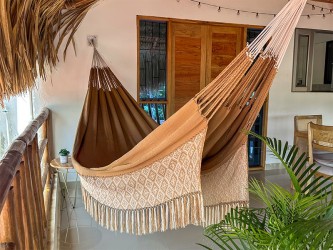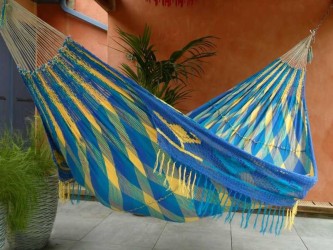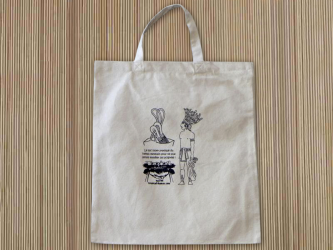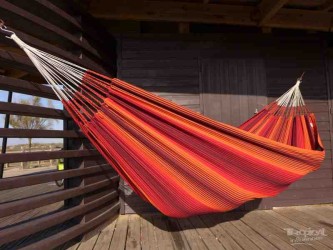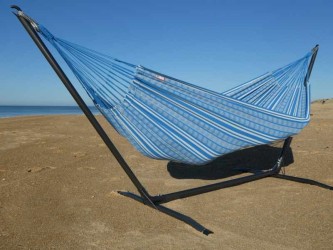In the large family of hammocks, we distinguish 2 types of bedding: the canvas one and the mesh one. In Colombia and Venezuela, which are the two largest countries in the world for this millenary object, there is a word for each. Among others, one"Chinchorro" if it is a net and "Hamaca" if it is made of canvas. If you show your Mexican hammock (net style) to a Colombian while talking about your hamaca, don't be surprised if they don't quite understand what you mean.
A very strange fact: Brazil, which is also a vast country in terms of hammock culture, does not have a single word in its vocabulary to describe it. Over there, they say "Rede de dormir," which translates as "sleeping net," just like there are also protective nets, fishing nets, etc. However, when the first hammocks were discovered, there was indeed the term "Acat" or even "Inri," whose origin is Tupinamba on the Brazilian coast around Rio de Janeiro. Why has a word been lost over the centuries?
The net hammock: its characteristics
- Its main asset is its freshness:It is found in regions where it stays warm at night. For example, in Mexico in the states of Yucatan, Quintana Roo, Campeche, or also in certain states on the Pacific coast. In Colombia, the Chinchorros are found in the Guajira desert. The net hammock is therefore cooler than the canvas model, as it allows air to pass through the mesh.
- Its second asset is its extendable bedding:Contrary to popular belief, due to its 4-strand mesh weaving, the net hammock hardly leaves any marks on the skin. This flexible and comfortable bedding is very durable.
The breathable mesh hammock: unbeatable for comfort
Unlike fishing nets in which each mesh is knotted, The true net hammocks are woven with loose meshes.. The threads slide over themselves and offer an expandable sleeping surface. This type of mesh perfectly hugs all the contours of your body.
One freshness mesh hammock Mexican, entirely handmade, will be just as comfortable as a Wayuu hammock from northeastern Colombia or those from Venezuela. The latter are classified in our department luxury large hammock.
The Mexican hammock: the best of nets
In this drawing, here is how the ... are made Mexican hammocks. At home Tropical Influences, we have beentrained by Anna Maria on the island of Holbox in the state of Quintana Roo to learn how to weave them. As a result, we can repair most Mexican hammocks. Note, the modelMexican is ultra light, It is perfect for travel and rivals the parachute fabric one. Its only drawback is that it must be hand washed.
The secret of the4-ply yarn.

The canvas hammock: its characteristics
This is the most common type of hammock in South America. It can be found everywhere. Whether industrial or handmade, the selection is vast. For example, it comes in 100% cotton, organic cotton, recycled cotton, or a cotton-acrylic blend, as well as cotton-polyester. As for polyester, only in China are hammocks made with 70% polyester or even 100%! But the label won't always tell you that... In Latin America, a hammock fabric will never have more than 30% polyester. Cotton is much more pleasant to the touch and less hot.
The canvas hammock: ease of use and maintenance
It is easier to use, durable, and easy to wash in the machine.It is ideally suited for cooler seasons. But also, easier to use for both children and adults.
To wash it in the machine, simply tie the straps together to prevent the cords from tangling with each other. Do not use a tumble dryer.
Many canvas models that we offer you are from our own designs. Discover our collection in durable canvasFrom Brazil or Colombia in recycled cotton.
The origin of our fabric hammocks
It should be specified that our choice focuses solely on Latin America. At Tropical Hamac, you will not find hammocks made in China or India. Indeed, we want to continue to promote the quality and ancestral craftsmanship of artisans from Colombia, Brazil, and also Venezuela.
The luxury hammocks from VenezuelaAre undoubtedly the most comfortable you can find nowadays. Unfortunately, for political reasons, importing from this country remains very complicated.
The best of canvas hammocks
It is in San Jacinto, in the Bolívar department of Colombia, that you can find the best handwoven fabric hammock. The weaving is done on a very rudimentary loom: the Telar. The weft is manually passed through the warp threads and pulled very tight. These high-end canvasesThey are among the most resistant. We have been working with Gladys for over 20 years !
Below is our sketch of the Colombian semi-industrial model.
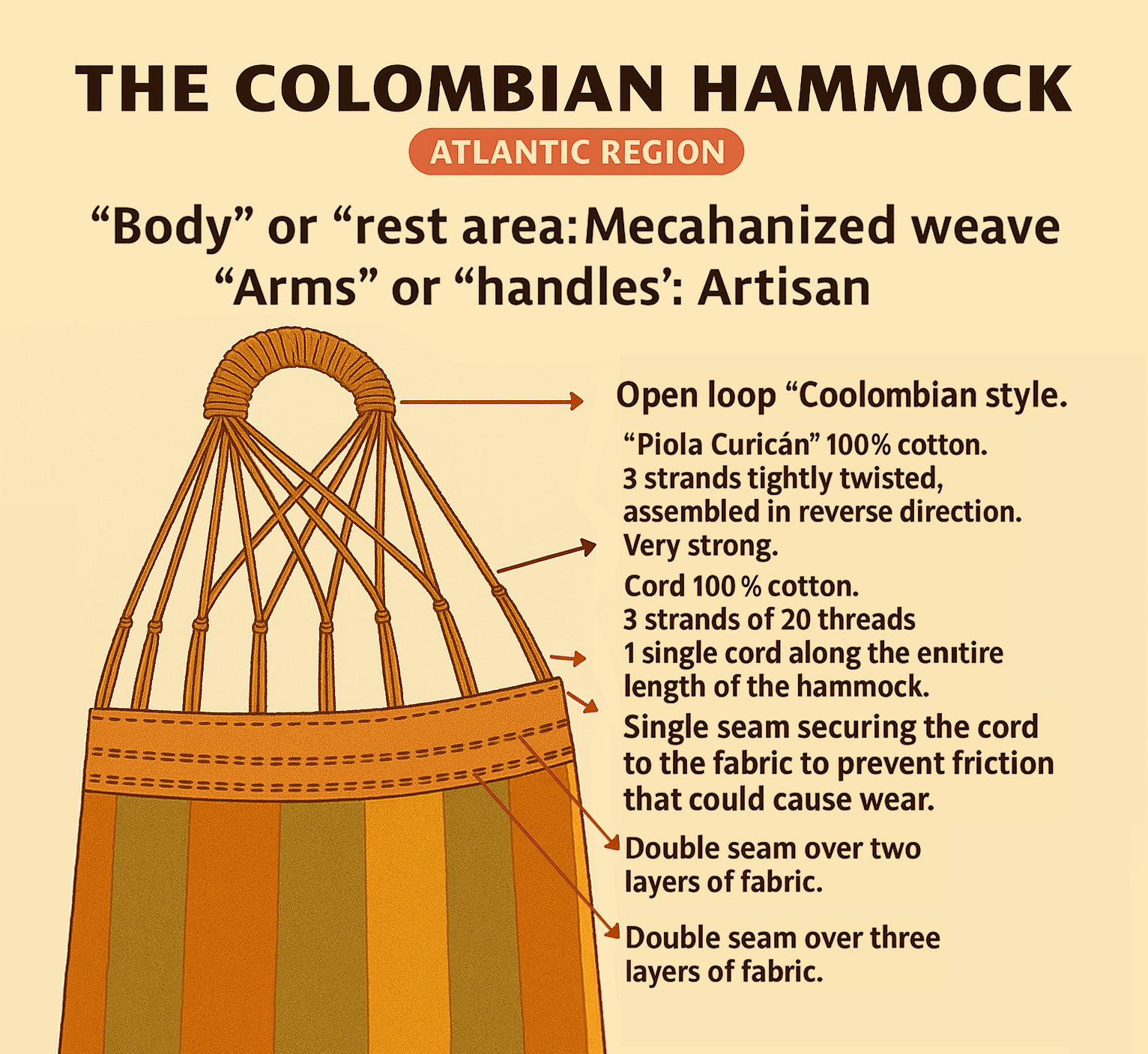
The Brazilian Hammock
Impeccable quality for this country, which boasts the highest number of hammock users. There, you can find them everywhere: in markets, in shops, and of course, in homes. This hammock culture has fostered true expertise, with an impressive sense of weaving and finishing, as well as an incredible choice of colors.
Every three years, we release a new collection, and no matter the imagined colors or requested combinations, nothing is impossible for these master craftsmen.
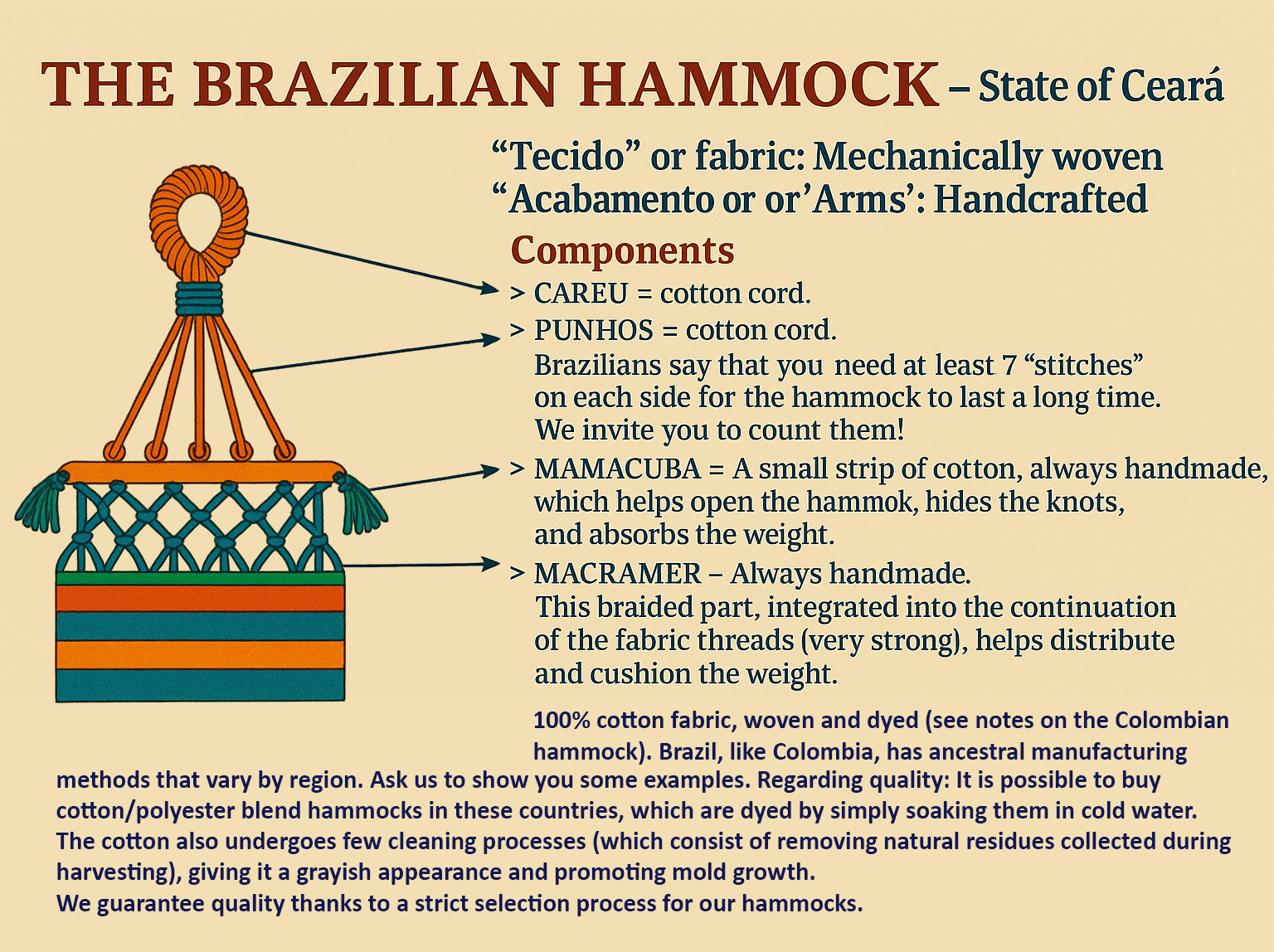
Conclusion
Here, we have designed three very different hammock styles: the Mexican net, the Colombian canvas, and the Brazilian hammock. But the hammock represents 1,000 years of history, and each country has its own unique expertise. Much like France and its wine culture. You will discover many models from different countries as you browse our website.
For even more information on this ancient art, visit our hammock blog...
Enjoy your visit!

 05 59 93 10 52
05 59 93 10 52 Write to us
Write to us


